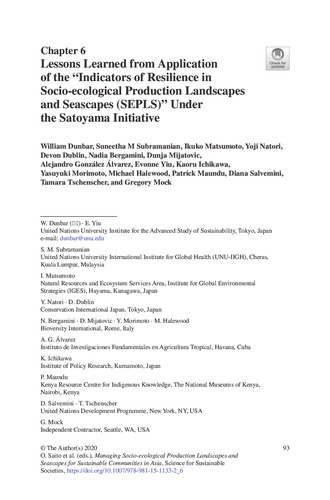Lessons learned from application of the “Indicators of Resilience in Socio-ecological Production Landscapes and Seascapes (SEPLS)” under the Satoyama initiative
Socio-ecological resilience is vital for the long-term sustainability of communities in production landscapes and seascapes, but community members often find it difficult to understand and assess their own resilience in the face of changes that affect them over time due to economic and natural drivers, demographic changes, and market forces among others, due to the complexity of the concept of resilience and the many factors influencing the landscape or seascape. This chapter provides an overview of a project and its resilience assessment process using an indicator-based approach, which has been implemented under the International Partnership for the Satoyama Initiative (IPSI). In this project, a set of 20 indicators were identified to capture different aspects of resilience in SEPLS, and examples are included from various contexts around the world, with the purpose of identifying lessons learned and good practices for resilience assessment. These indicators have now been used by communities in many countries, often with the guidance of project implementers, with the goal of assessing, considering, and monitoring their landscape or seascape’s circumstances, identifying important issues, and ultimately improving their resilience. While this particular approach is limited in that it cannot be used for comparison of different landscapes and seascapes, as it relies on community members’ individual perceptions, it is found useful to understand multiple aspects of resilience and changes over time within a landscape or seascape.

